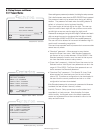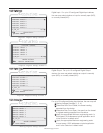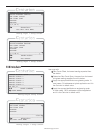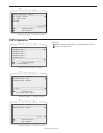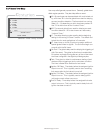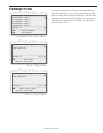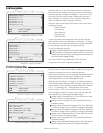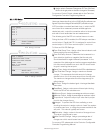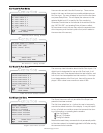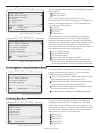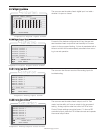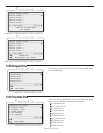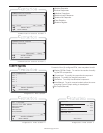
CE-05171N page 30 of 44
hh))
Assign value to Decrease Changeover Off Time. (Set fixed
off-time for single pulse on direction change for Decrease).
For more on Control Output, please refer to the Centurion
Configurable Controller Programming Manual.
66..33..1111 PPIIDD SSeettuupp
Users may view and edit up to four (4) MConfigPro software con-
figured Proportional Integral Derivative (PID) calculation loops.
A PID provides a constant feed back loop, in which the PID
can correct for a measured process variable against a
desired set point, output the corrective action to the process
and wait for and recalculate the next measurement.
The ultimate goal of the PID is to reduce the error to zero.
During the time a PID is enabled, the PID always overrides a
control output. Recall that PID 1 is assigned its control from
control output 1, PID 2 from control output 2, and so on.
To View and Edit PID Settings:
11))
Over Ride Ramp Time: Assign a time interval value to wait
before making the next adjustment.
22))
Over Rid Ramp Amount: Determine the increments in a
given direction (positive or negative) that the set point
should be altered to regain balanced processes. In the
example of the discharge and suction pressure application,
this value would indicate how much the PID should resist
its goal in reaching the set point.
33))
Ramp Time: Assign a time interval for the PID to calculate error.
44))
Over Ride Max Change: Assign a maximum allowed
change. This represents the total amount of change
allowed into or out of the ramp amount from the set point.
The maximum change value should be large enough to
effect change.
55))
Set Point: Assign the desired goal—the target feedback
base value.
66))
DeadBand: Assign a value around the set point during
which the PID will not calculate error.
77))
Minimum Output: Assign a percentage as minimum output.
88))
Maximum Output: Assign a percentage as maximum output.
99))
Proportional: Adjust the output by a value that is propor-
tional to the change of error.
1100))
Integral: To prevent the PID from oscillating or over-
shooting the set point, assign a value to “reset” the system
to produce zero error, or nudge the process variable to the
set point. This value is typically set to zero.
1111))
Derivative: Assign a value to the rate of change of error.
This value is typically set to zero.
1122))
Max Override Change: Assign a percentage rate of
change over which would cause harm to the system.
For more on PID, please refer to the Centurion Configurable
Controller Programming Manual.
TM
C
C
C
▼
▼
PID Setup Screen
___________________________________
▼▼
PID SETUP
PID 1
PID 1
_
PID 2
PID 3
PID 4
▼▲ ENTER-SUBMENU
MORE MENUS
___________________________________
___________________________________
TM
C
C
C
PID 1 Setup Screen
___________________________________
▼▼
PID 1 SETUP
OVERRIDE RAMP TIME
00004
OVERRIDE RAMP AMOUNT
RAMP TIME
MAX % OF CHANGE
SETPOINT
▼▲ ENTER-EDIT
ESC-EXIT THIS MENU
___________________________________
___________________________________




